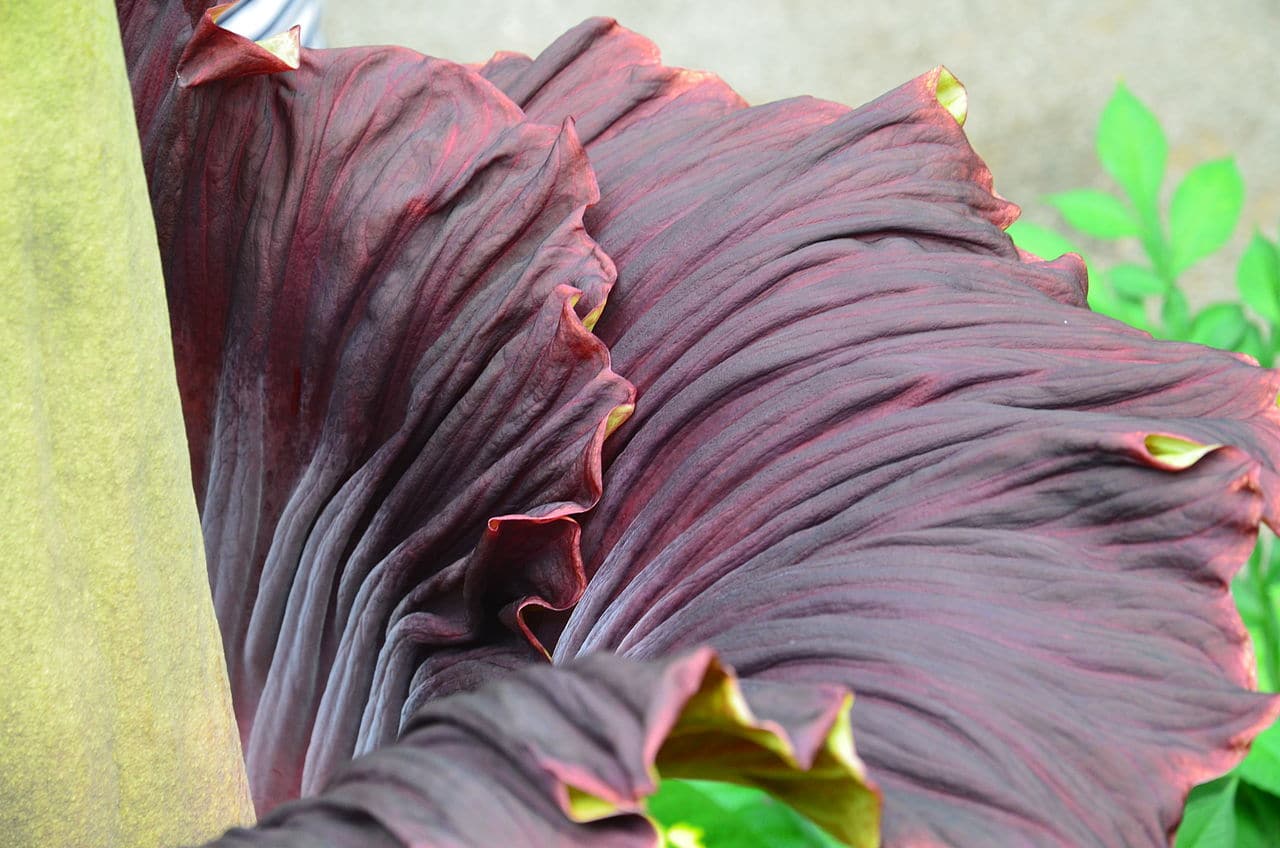
The Amorphophallus They are plants that do not leave anyone indifferent, well, maybe someone does, but it would be quite curious. And it is that when they bloom ... the most likely thing is that you want to see what these flowers are like, but you may not want to get too close. The reason is that they give off an aroma that attracts insects that feed on decomposing organic matter.
I can't tell you exactly how bad they smell, because I haven't had a chance to see any up close. But from what is said on the Internet, it is a smell that is not easily forgotten. Although on the other hand, these plants are very, very pretty, whether they are in flower or not.
Origin and characteristics of the Amorphophallus
The Amorphophallus are herbaceous and tuberous plants native from West Africa to the Pacific islands. They live in tropical and subtropical regions, usually at low altitudes, and are usually part of the secondary forest vegetation. The genus is made up of about 170 species, some of which were introduced to America.
If we talk about its characteristics, first we have to do it about its tuber. This is globose, being able to measure about 40 centimeters in diameter, and it is found underground. From it sprout roots, which grow into the earth, and also a single leaf. The leaf is really curious, because at first glance it looks like a young tree when it finishes developing.
It is composed of a straight stem, and a sheet that can be more or less divided into small segments or leaves. It will only remain alive for a few months, the duration of the vegetation season. Afterwards, it will dry out and fall off, leaving the tuber intact.
They are monoecious plants. The inflorescence has several parts:
- Spadix: it is a spike full of flowers, with a fleshy type axis.
- Female flowers: they only have one pistil.
- Male flowers: they are really just a group of stamens.
- Sterile appendix or area: with sterile flowers that botanists call staminodes.
- Spathe: it is a modified leaf that wraps and protects the inflorescence. It is usually light green or brownish in color.
For pollination to occur, the appendix has to open, releasing an odor similar to that emitted by decaying meat.. With this, certain insects are attracted to the plant, which do not hesitate to get inside the inflorescence, being trapped behind the spathe. Before being released, they have to fulfill a mission: to impregnate the female flowers with the pollen that the male flowers will deposit on them the next day, when they open.
As soon as they are free again, these insects leave, leaving the pollinated flowers that will begin to produce their fruits. These will be small, with colors ranging from red to white, through blue, yellow, orange, or white and yellow.
Main species
Of the 170 species there are, these four are very popular:
Amorphophallus bulbifer
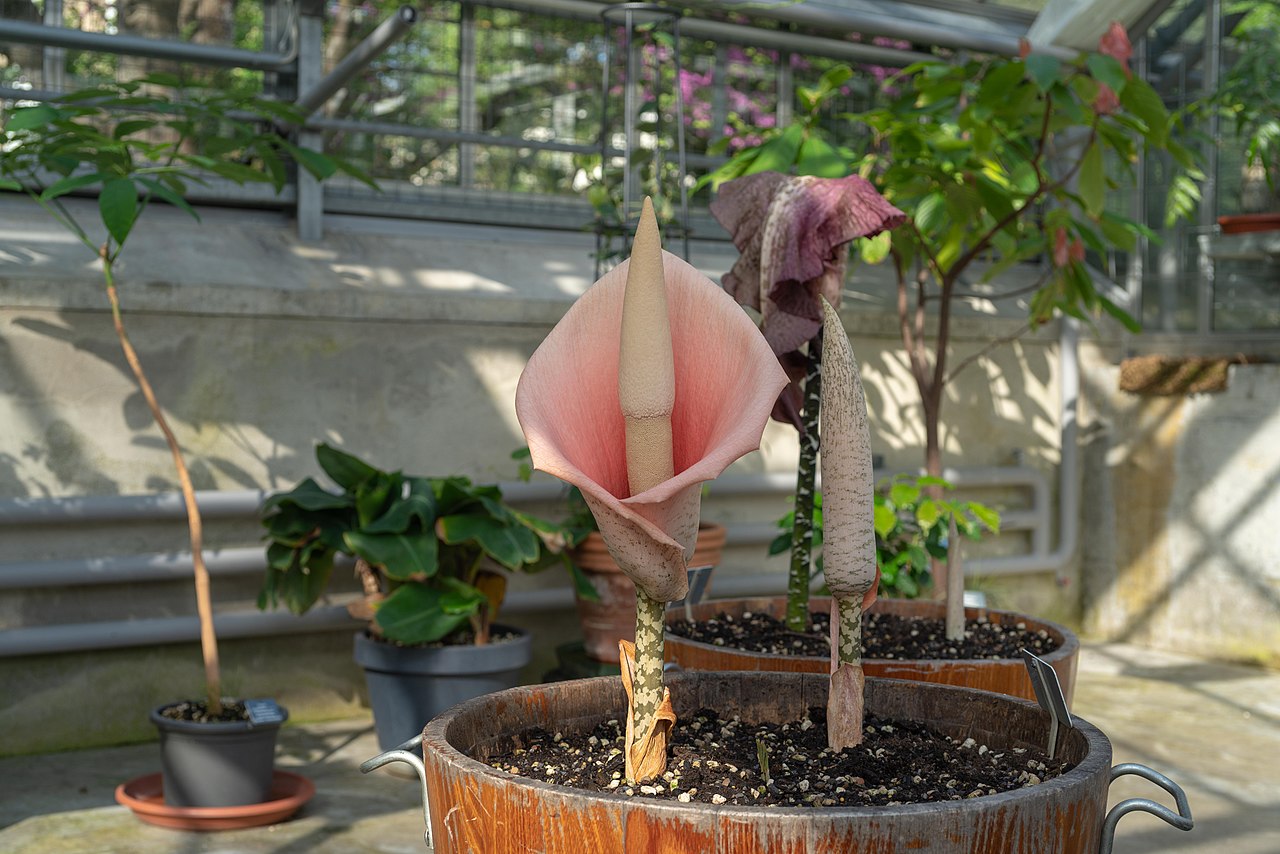
Image - Wikimedia / PantaRhei
El Amorphophallus bulbifer It is a plant native to the Himalayas, Burma and northern Myanmar. Its leaf reaches a height of 50 to 90 centimeters, and its tuber is 15 centimeters in diameter. The inflorescence has a pinkish spathe on the inside and greenish and mottled on the outside.
It lives at somewhat higher altitudes than the rest, so it resists the cold better than other Amorphophallus.
Amorphophallus konjac
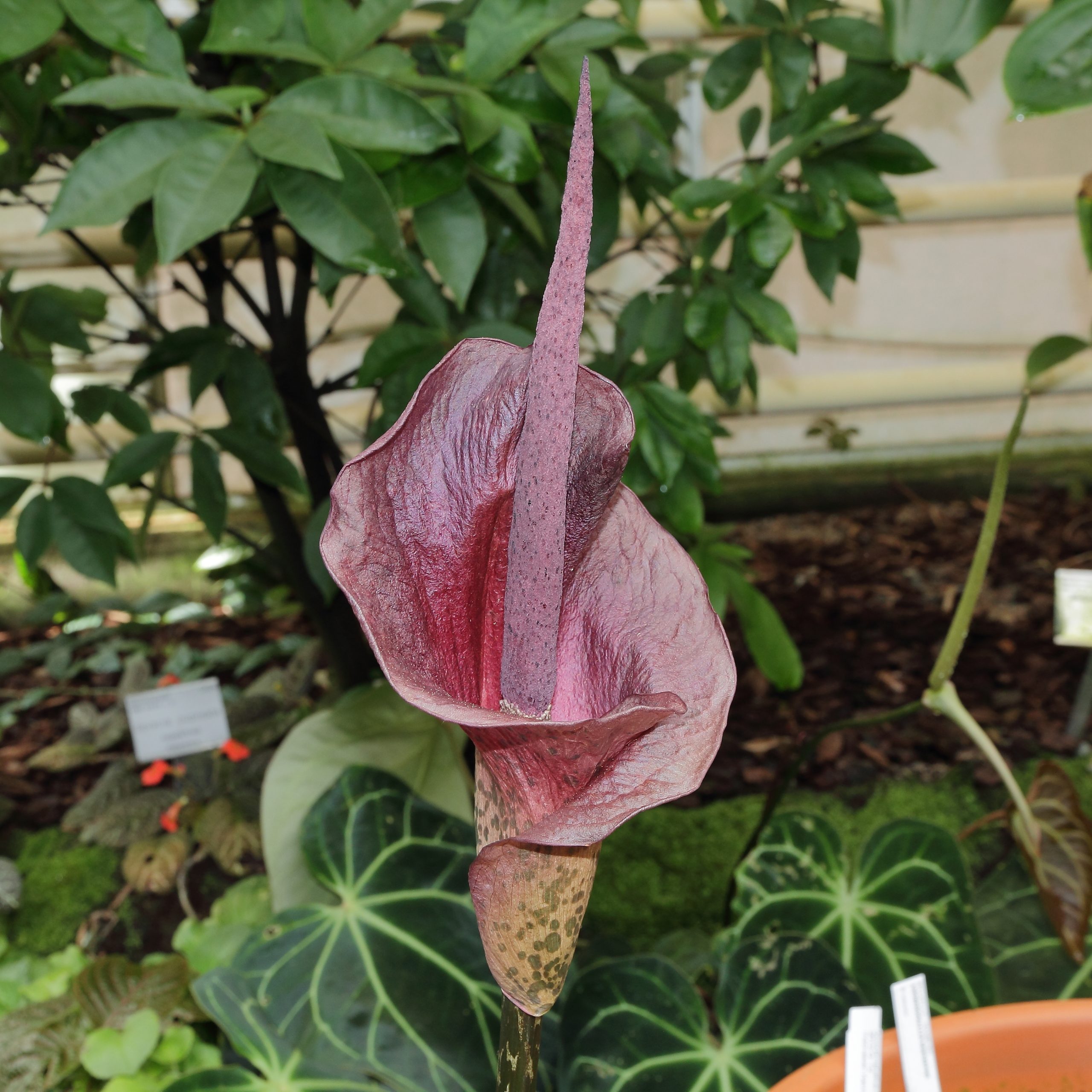
Image - Wikimedia / CT Johansson
El Amorphophallus konjac, known as the devil's tongue, is a species native to Japan, China, and even southern Indonesia. Its tubers are up to 25 centimeters in diameter, and its leaf can be up to 1,3 meters wide. Its inflorescence has a purple spadix, which is up to 55 centimeters long.
It has several edible uses. In its places of origin it is used to make flour and jams, as well as to replace gelatin.
Amorphophallus paeoniifolius
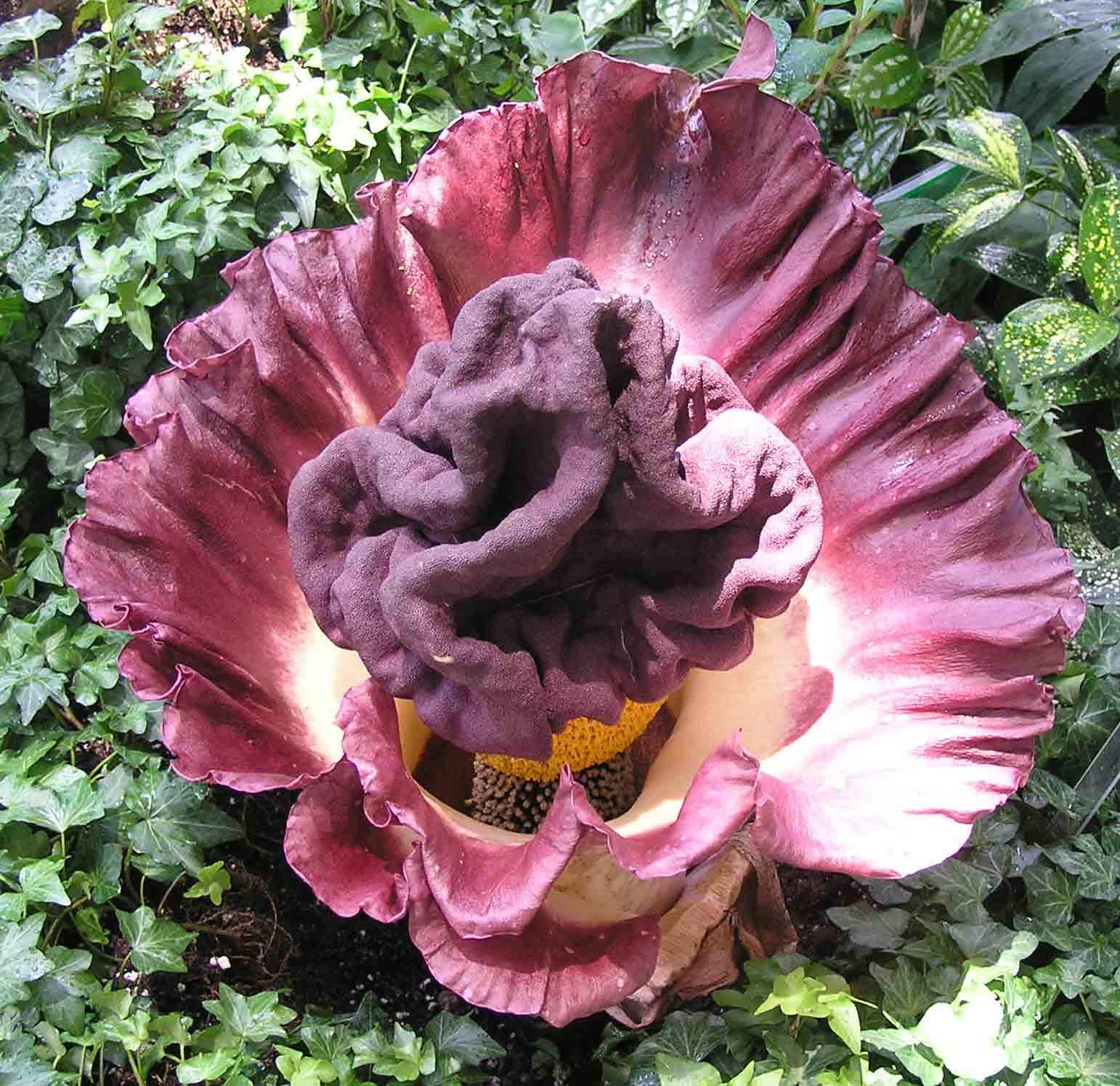
Image - Flickr / 阿 橋 HQ
El Amorphophallus paeoniifolius It is a plant native to the rainforests of Southwest Asia, including those of Malaysia, the Philippines, Borneo, and Thailand. It is also found in northern Australia, and has become naturalized in Madagascar and the Seychelles. Its tuber is about 50 centimeters wide, and its leaf is up to 2 meters high. The inflorescence consists of a spadix of up to 70 centimeters, and a pale green to dark brown spathe on the outside.
Its tubers are edible, and it is also believed to have medicinal properties, such as: digestive, aphrodisiac, tonic or anti-inflammatory.
Amorphophallus titanum
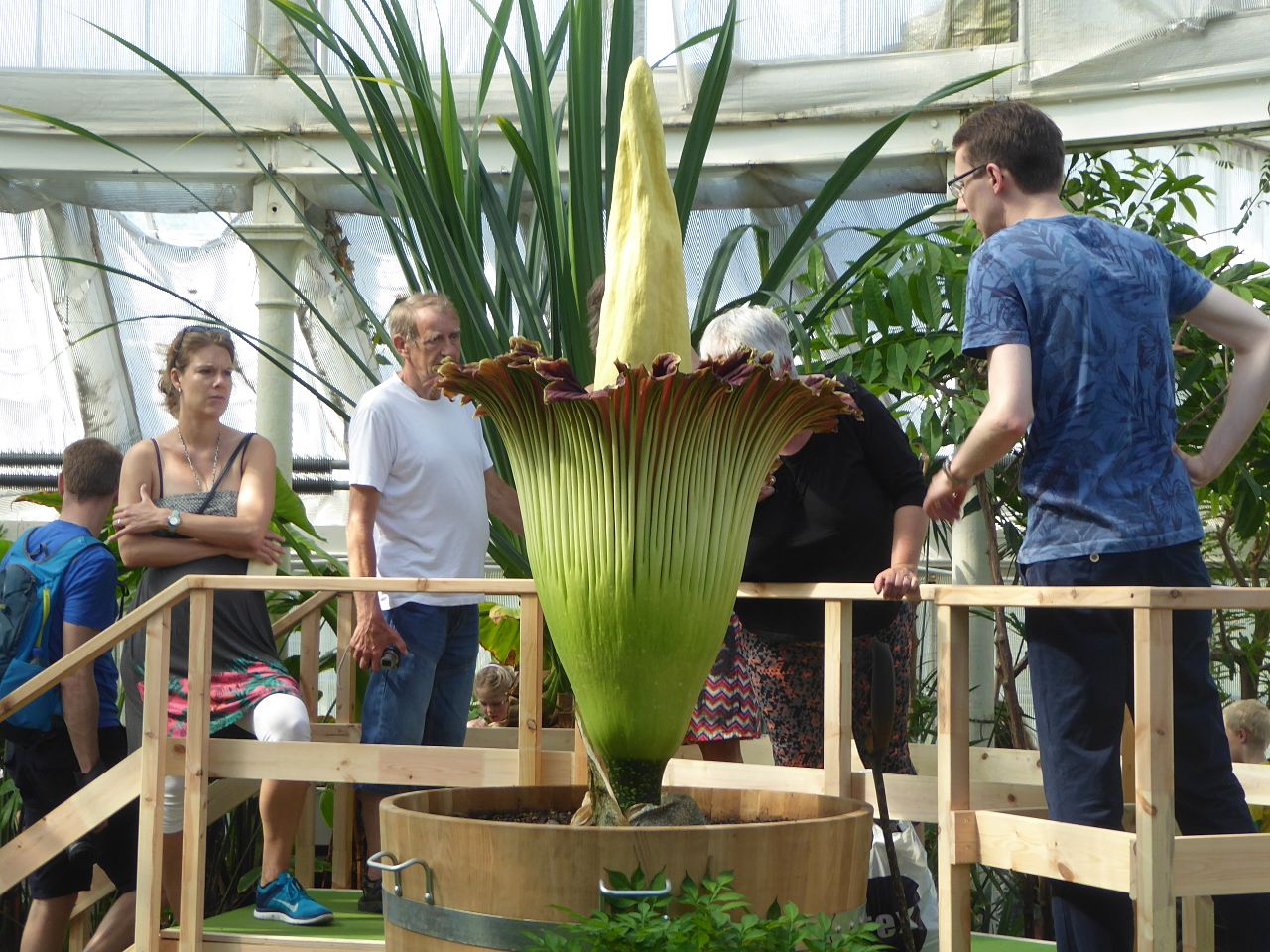
Image - Wikimedia / Leif Jørgensen
El Amorphophallus titanum, known as corpse flower or giant hoop, is by far the best known species. It is native to Sumatra (Indonesia), and It is a plant that produces an inflorescence that can reach 3 meters in height. This one has a spathe that is green on the outside and red on the inside, and a spadix is light yellow. Its blade is 1 meter high.
It is in danger of extinction. In cultivation it is complicated, since it needs high humidity, shade and temperatures that are maintained between 18 and 30 degrees Celsius.
How are they cared for?
The Amorphophallus are plants from which it is not uncommon to get seeds or tubers. I myself have two a.konjac, and both are planted in the garden in a very protected area; I even had a A. titanum, although it did not survive the winter despite the fact that there were no frosts that year (generally there is usually up to -2ºC).
So, based on my own experience, growing these two species in Mallorca (Spain), I advise you the following:
Location
- Garden / patio / terrace: you have to put them in the shade. Avoid areas where they can be exposed to the star king, even if only for a few minutes.
- Housing: the room must receive light from the outside, and there must be no drafts. In addition, the humidity around the plant must be high, so if it is not, you should put a container with water nearby.
Earth
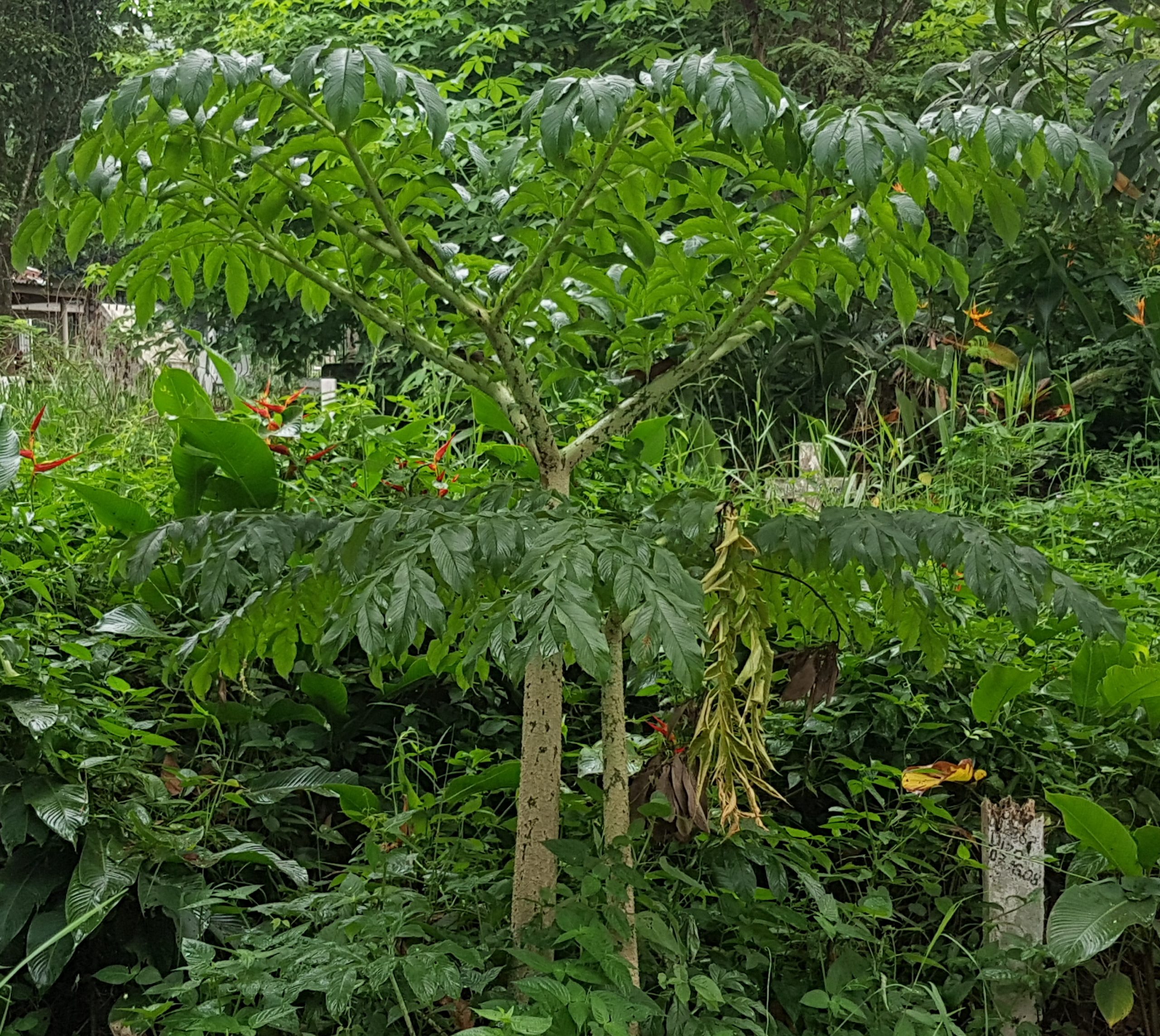
- For the garden: if you are going to plant it in the garden, the soil must be rich in organic matter and light. It is also important that it does not puddle or become too compact.
- For flowerpot: The a.konjac lives well in mobs (I had them with universal substrate before planting them in the garden), but if you are going to grow more delicate species (like the A. titanum), I recommend you use pumice (on sale here) or some similar substrate.
Irrigation
It has to be followed, but not daily. Let me explain: these plants do not withstand drought, but it would not be good if they were watered every day. The soil, or the substrate, has to dry a little before rehydrating. For example, to give you an idea, I water mine 2-3 times a week during the summer, and in winter once every 7 or 10 days, and even a little less if it rains. But, I repeat, they are on the ground.
If you grow them in pots, you will have to be a little more careful, since there is less soil, it will take less time to dry.
Subscriber
Especially if they are in pots, they will appreciate a contribution of fertilizer once a week during spring or summer. You can add liquid fertilizers, such as guano.
Multiplication
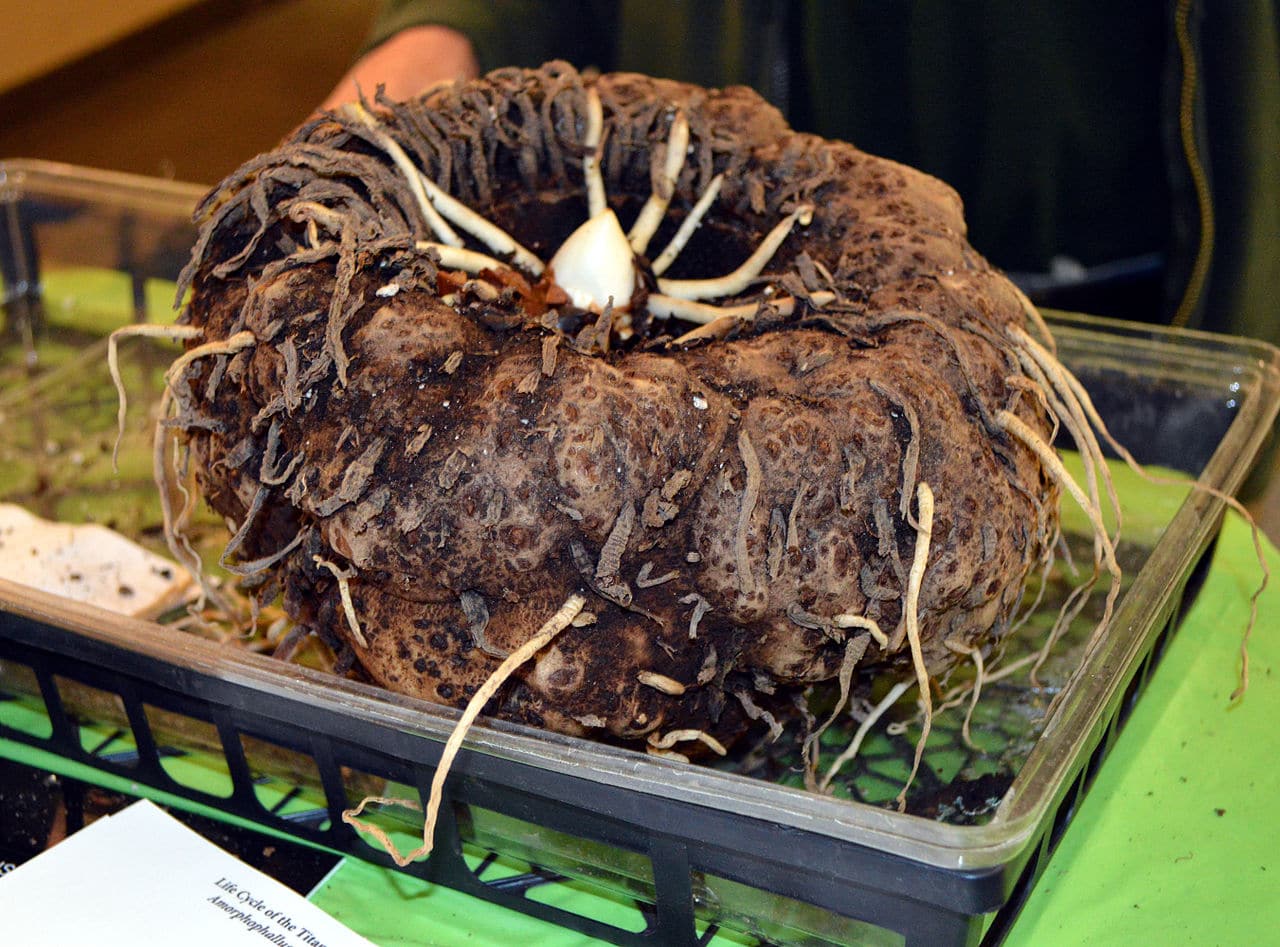
Image - Wikimedia / Georgialh
They multiply by seeds and by tubers.
- Seeds: they are sown in spring, in controlled seedbeds with a substrate rich in organic matter mixed with 20-30% perlite. The temperature should be around 20-25ºC, and they should be kept in the shade.
- Tubers: they are also planted in spring, or in autumn if they have been bought in that season and in your area the minimum temperature exceeds 15ºC.
Rusticity
Most cannot stand frost. El a.konjac Yes, it can resist up to -2ºC, but only if it is highly protected and the land remains dry.
What did you think of the Amorphophallus?